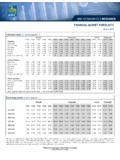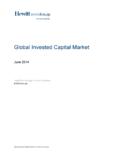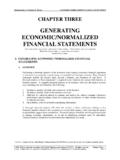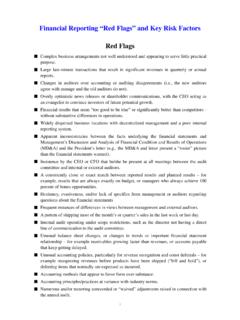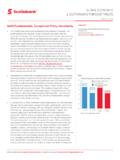Transcription of HUNGARY - OECD.org
1 3. DEVELOPMENTS IN INDIVIDUAL OECD AND SELECTED NON-MEMBER ECONOMIESOECD ECONOMIC OUTLOOK, VOLUME 2018 ISSUE 2 PRELIMINARY VERSION OECD 2018123 HUNGARYThe strong economic expansion is projected to slow gradually in the next two consumption will be supported by real-wage gains and record-high employment,while investment will be boosted by housing construction and corporate activity, as wellas disbursements of EU structural funds, albeit at a slower rate. Tight labour marketconditions will raise inflation, projected to reach 4% in 2019. As capacity constraints bite,demand is increasingly met by imports, and growth will gradually lose and monetary policies are expansionary. Tax cuts and public spendingincreases were introduced in 2018, and further tax cuts are scheduled for 2019. Thecentral bank has maintained policy rates on hold although headline inflation exceeds itscentral target of 3%.
2 Macroeconomic policies should be tightened gradually to preventthe economy from overheating. This would also help the authorities to meet their targetof reducing public debt below 50% of GDP in the medium demand will remain strongDomestic demand is driving growth, underpinned by rising real incomes, highconsumer confidence, and supportive macroeconomic policies. Investment is expandingfast thanks to EU disbursements, buoyant residential construction and the need to expandcapacity. Still-strong external demand is boosting exports. However, the highimport-content of private consumption and manufacturing is increasing imports, reducingthe current account unemployment rate fell to in 2018, a historical low, and employment rosesteadily. The tightening labour market, public sector wage increases and a hike in theminimum wage led to wage growth of 12% in the first eight months of 2018.
3 Headlineinflation reached in October 2018, reflecting price increases for fuel, food, tobacco andalcohol rather than underlying wage pressures, while core inflation rose Percentage of manufacturing firms pointing to labour shortages as a factor limiting :Eurostat Industry database; and OECD Main Economic Indicators database1 2 2015=100, Retail sales, volumeManufacturing productionConstructionEconomic activity is buoyant707478828690020406080100201020122 01420162018 % % Labour shortage indicator Capacity utilisationCapacity is tight3. DEVELOPMENTS IN INDIVIDUAL OECD AND SELECTED NON-MEMBER ECONOMIESOECD ECONOMIC OUTLOOK, VOLUME 2018 ISSUE 2 PRELIMINARY VERSION OECD 2018124A tighter policy stance is neededThe risk of overheating means that the stimulatory macro-economic policies shouldbe tightened gradually.
4 Monetary policy interest rates are still close to zero, but the centralbank has indicated it will begin to normalise monetary policy. Rates are projected toincrease in the first quarter of 2019, to help contain inflation expectations. Expansionaryfiscal measures in 2019 include tax-allowances for families, cuts in social securitycontributions for businesses and VAT reductions. Spending will increase on wages,education, infrastructure, and subsidies for house purchases. As a result, the generalgovernment deficit will narrow only gradually, despite robust economic period of above-trend growth provides a window of opportunity to addressmedium-to-long-term fiscal challenges, including increases in ageing-related spending onpensions and health care. Robust growth is expanding employment opportunities, whichshould enable the government to scale back public work schemes.
5 The mainlyforeign-owned export sector has been at the core of the upswing, while the domestic SMEsector has low growth, productivity and propensity to innovate. Strengthening SMEsrequires improving regulatory policies to improve the business environment, and betterdevelopment of human capital through skills :Demand, output and prices1 2 &XUUHQW SULFHV+8) ELOOLRQ*'3 DW PDUNHW SULFHV 3 ULYDWH FRQVXPSWLRQ *RYHUQPHQW FRQVXPSWLRQ *URVV IL[HG FDSLWDO IRUPDWLRQ )LQDO GRPHVWLF GHPDQG 6 WRFNEXLOGLQJ 7 RWDO GRPHVWLF GHPDQG ([SRUWV RI JRRGV DQG VHUYLFHV ,PSRUWV RI JRRGV DQG VHUYLFHV 1HW H[SRUWV Memorandum items*'3 GHIODWRU B &RQVXPHU SULFH LQGH[ B &RUH LQIODWLRQ LQGH[ B 8 QHPSOR\PHQW UDWH RI ODERXU IRUFH B +RXVHKROG VDYLQJ UDWLR QHW RI GLVSRVDEOH LQFRPH B *HQHUDO JRYHUQPHQW ILQDQFLDO EDODQFH RI *'3 B *HQHUDO JRYHUQPHQW JURVV GHEW RI *'3 B *HQHUDO JRYHUQPHQW GHEW 0 DDVWULFKW GHILQLWLRQ RI *'3 B &XUUHQW DFFRXQW EDODQFH RI *'3 B &RQWULEXWLRQV WR FKDQJHV LQ UHDO *'3 DFWXDO DPRXQW LQ WKH ILUVW FROXPQ &RQVXPHU SULFH LQGH[ H[FOXGLQJ IRRG DQG HQHUJ\ Source.]]]]]]]
6 2(&' (FRQRPLF 2 XWORRN GDWDEDVH 3 HUFHQWDJH FKDQJHV YROXPH SULFHV 3. DEVELOPMENTS IN INDIVIDUAL OECD AND SELECTED NON-MEMBER ECONOMIESOECD ECONOMIC OUTLOOK, VOLUME 2018 ISSUE 2 PRELIMINARY VERSION OECD 2018125 Growth is projected to slow but inflationary tensions will persistEconomic growth will gradually slow in the next two years as capacity constraintstighten. As a result, domestic demand will be increasingly met by imports. Privateconsumption will continue to benefit from surging real incomes, while businessinvestment will expand to meet rising capacity pressures. Housing construction will slowin response to the re-introduction of VAT on new dwellings from 2019. New industrialcapacity coming on-stream will support exports, but rising unit-labour costs will slowmarket-share gains and export market growth will slow. The projection is subject todownside risks.))
7 Higher-than-expected wage increases could de-anchor inflationexpectations and require a sudden tightening of monetary policy, thus harming growth. Onthe other hand, a faster reduction in public work schemes could reduce wage pressures,sustaining growth. HUNGARY remains vulnerable to spillovers from financial turmoil inemerging-market economies, which would jeopardise financial stability. A hard Brexitwould hurt HUNGARY s exports and business confidence.










